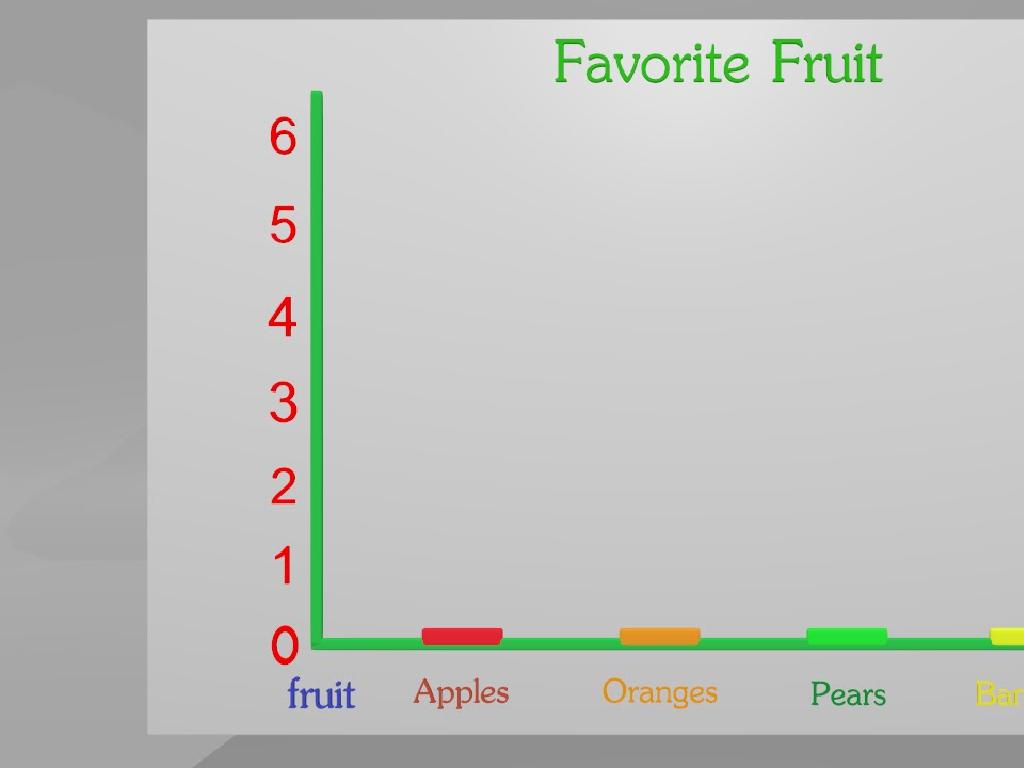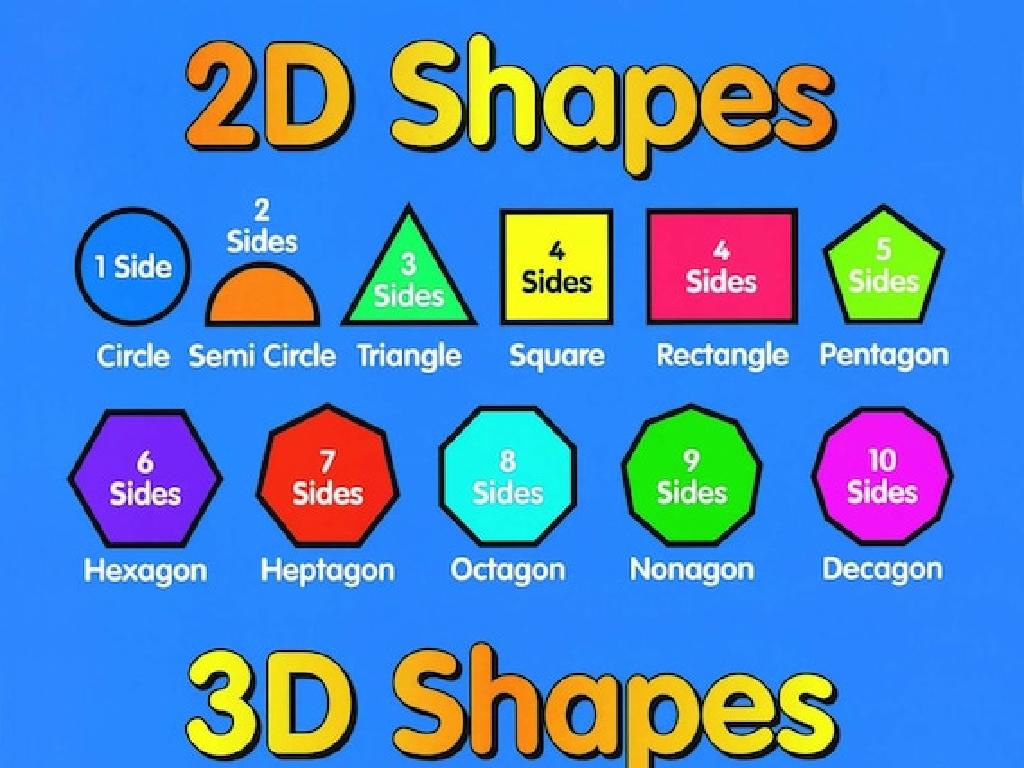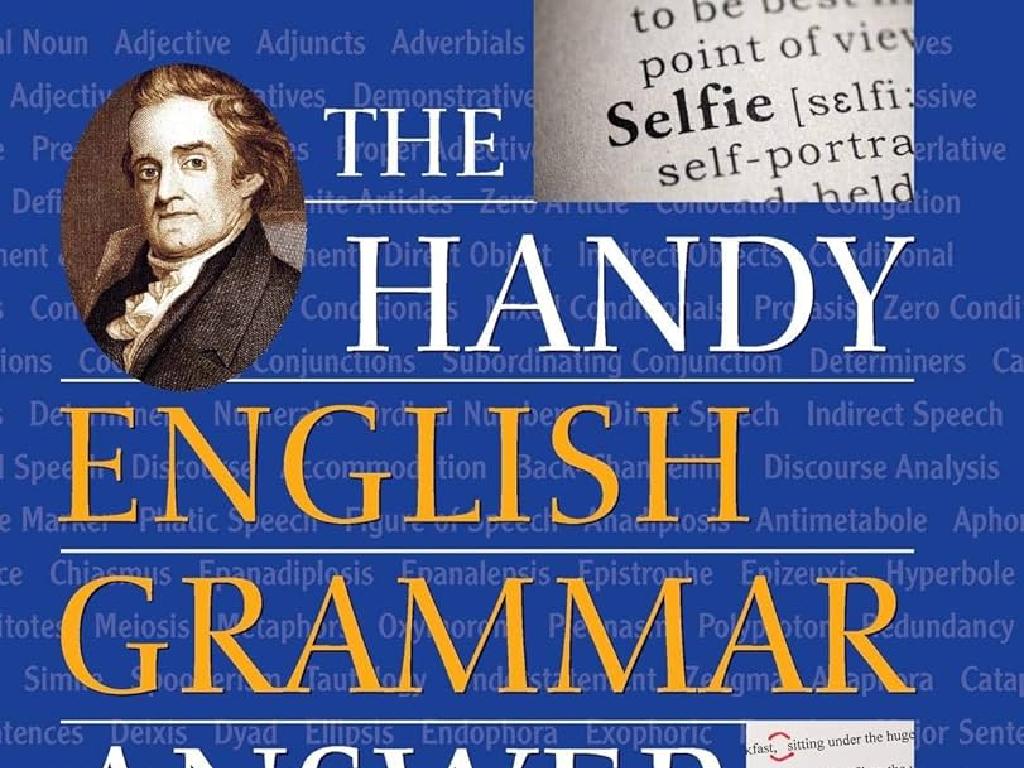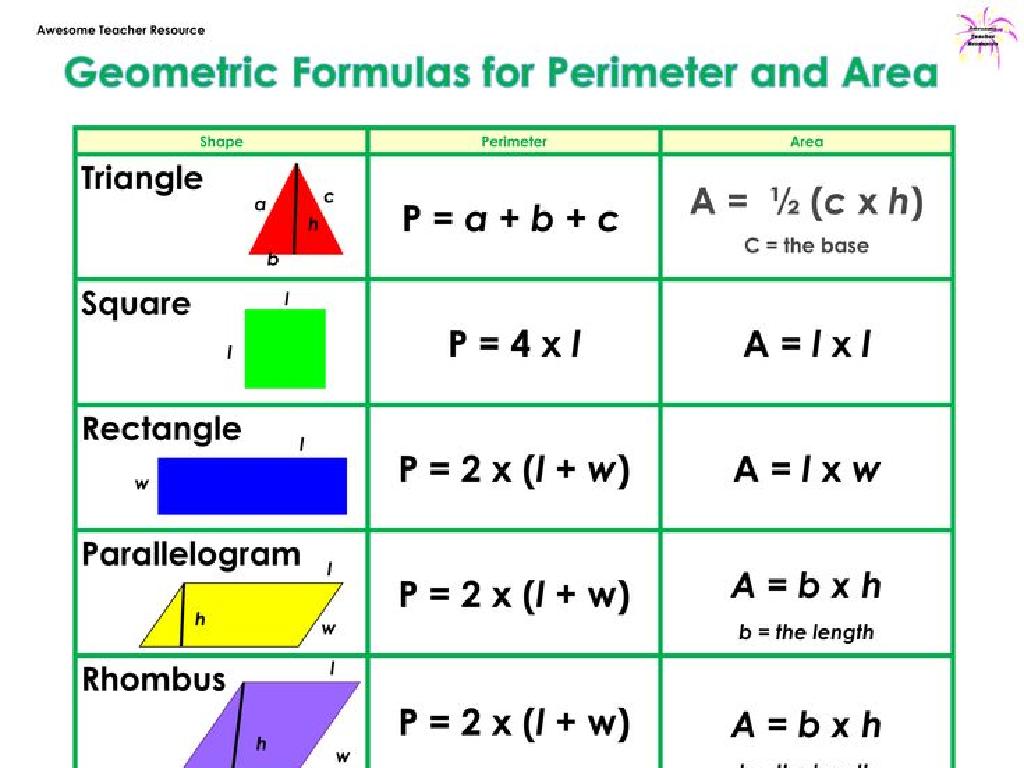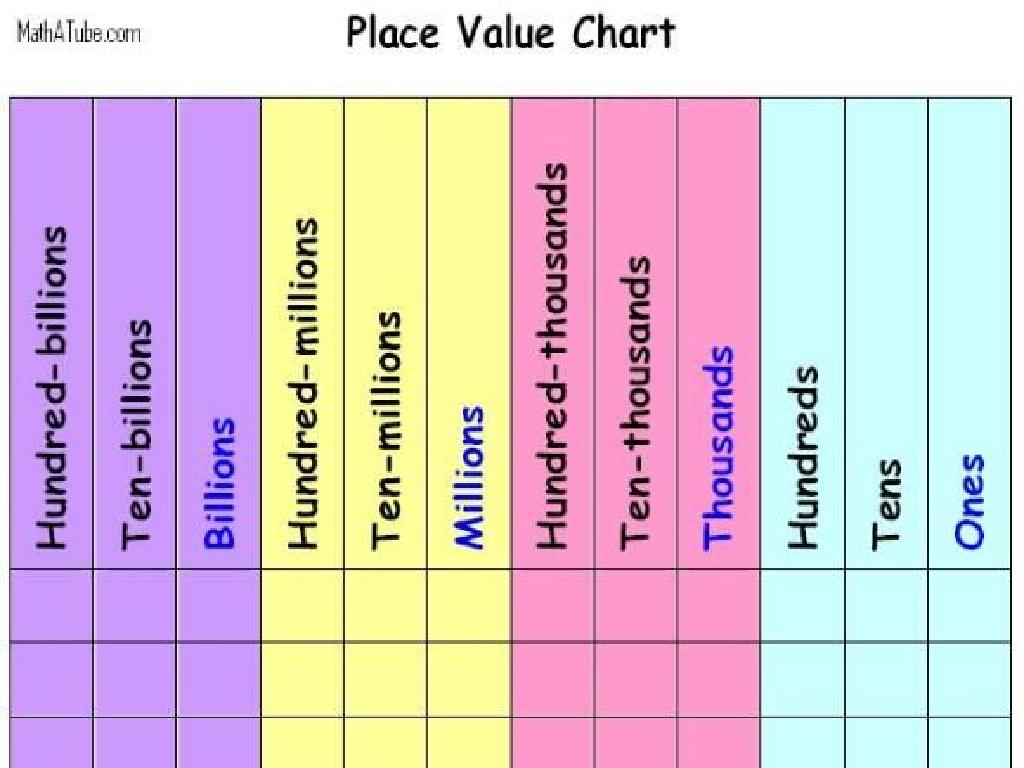Use Relative Pronouns: Who And Whom
Subject: Language arts
Grade: Sixth grade
Topic: Pronoun Types
Please LOG IN to download the presentation. Access is available to registered users only.
View More Content
Relative Pronouns: Who & Whom
– Define relative pronouns
– Words like ‘who’ and ‘whom’ relate to the subject or object.
– Role of ‘who’ and ‘whom’ in sentences
– ‘Who’ for subjects, ‘whom’ for objects. E.g., ‘Who is calling?’ vs ‘Whom did you call?’
– Importance of correct pronoun usage
– Using ‘who’ and ‘whom’ correctly improves clarity and precision in language.
– Practice with examples
– We’ll look at sentences and decide whether to use ‘who’ or ‘whom’.
|
This slide introduces the concept of relative pronouns, focusing on ‘who’ and ‘whom’, which are commonly misused. Start by defining relative pronouns and their function in a sentence. Explain that ‘who’ is used when referring to the subject of a sentence, while ‘whom’ is used for the object. Emphasize the importance of using the correct pronoun to maintain clarity in communication. Provide clear examples to illustrate the proper use of ‘who’ and ‘whom’. Encourage students to practice by creating sentences and identifying whether to use ‘who’ or ‘whom’. Prepare to correct common misconceptions and reinforce the rules with additional examples if needed.
Understanding Pronouns
– Pronouns: A Quick Review
– Pronouns are words used instead of nouns to avoid repetition.
– Pronouns replace nouns
– They stand in for people, places, things, or ideas.
– Examples: I, you, he, she, it, we, they
– ‘I’ for the speaker, ‘you’ for the listener, others for people or things being discussed.
|
Begin the lesson with a quick review of pronouns, ensuring that students recall that pronouns are words that take the place of nouns. This helps to avoid repetition and makes sentences easier to read and understand. Provide examples of pronouns such as ‘I’, ‘you’, ‘he’, ‘she’, ‘it’, ‘we’, and ‘they’, and explain the context in which each is used. ‘I’ refers to oneself, ‘you’ to the person being spoken to, and ‘he’, ‘she’, ‘it’, ‘we’, and ‘they’ to other people or things. Use simple sentences to illustrate how pronouns function in place of nouns. Encourage students to come up with their own sentences using different pronouns to solidify their understanding.
Understanding Relative Pronouns: Who & Whom
– Relative pronouns link clauses
– They connect additional information to nouns or pronouns.
– Examples: who, whom, whose, which, that
– ‘Who’ for subjects, ‘whom’ for objects in sentences.
– Today’s focus: Who vs. Whom
– Learn when to use each pronoun correctly.
– Usage rules for ‘who’ and ‘whom’
– ‘Who’ is used for the subject performing an action, ‘whom’ for the object receiving the action.
|
This slide introduces the concept of relative pronouns, which are used to connect clauses to nouns or pronouns, providing more information about the subject. We will focus on ‘who’ and ‘whom’, two commonly confused relative pronouns. ‘Who’ is used to refer to the subject of a clause, while ‘whom’ is used for the object of a verb or preposition. Provide examples to illustrate the correct usage, such as ‘The teacher who explained the lesson’ versus ‘The student to whom the lesson was explained’. Encourage students to create sentences using both ‘who’ and ‘whom’ to reinforce their understanding.
Understanding ‘Who’ in Sentences
– ‘Who’ refers to the subject
– Use ‘who’ for the person doing an action
– Example: Girl who won the race
– ‘The girl who won the race is my friend’ shows ‘who’ describes the girl, the subject.
– Activity: Identify the subject
– Find ‘who’ in sentences and determine the subject it describes.
|
This slide introduces the relative pronoun ‘who,’ which is used to refer to the subject of a clause – the person doing the action. The example provided should help students see how ‘who’ connects additional information to the subject. The activity will reinforce this concept by having students identify the subject in various example sentences that use ‘who.’ For the activity, prepare sentences with clear subjects for students to practice on. Encourage them to explain why ‘who’ was used instead of ‘whom’ in each case. This will help solidify their understanding of ‘who’ as a subject pronoun.
Mastering ‘Whom’ in Sentences
– ‘Whom’ as the clause object
– ‘Whom’ is used for the person receiving the action.
– Example with ‘whom’
– ‘The boy to whom the teacher was speaking is absent.’
– ‘Whom’ follows prepositions
– Words like ‘to’, ‘for’, ‘with’ often come before ‘whom’.
– Tips to remember ‘whom’
– Use ‘whom’ when answering ‘to whom?’ or ‘for whom?’.
|
This slide focuses on the correct usage of ‘whom’ in sentences, which can be a challenging concept for sixth graders. ‘Whom’ is used to refer to the object of a clause, meaning the person that something is being done to. An example helps illustrate this point, showing ‘whom’ in the context of a sentence where the teacher is speaking to a boy. Highlight that ‘whom’ is often used after prepositions, which is a useful tip for students to remember its correct application. Encourage students to ask themselves if they can answer the question with ‘him’ or ‘her’ to decide if ‘whom’ is appropriate. Provide additional examples and practice sentences to reinforce learning.
Understanding ‘Who’ vs. ‘Whom’
– ‘Who’ for the subject of a verb
– Use ‘who’ like ‘he’ or ‘she’ in a sentence
– ‘Whom’ for the object of a verb
– Use ‘whom’ like ‘him’ or ‘her’ when it’s the object
– ‘Who’ vs. ‘Whom’ trick
– Replace with ‘he/she’ or ‘him/her’ to decide
– Practice with examples
– ‘Who/Whom did you see?’ You saw ‘him’ = ‘Whom did you see?’
|
This slide introduces the relative pronouns ‘who’ and ‘whom’ and explains their correct usage. ‘Who’ is used when referring to the subject of a verb, the one doing the action. ‘Whom’ is used when referring to the object of a verb or preposition, the one receiving the action. A simple trick to determine which to use is substituting ‘who’ with ‘he’ or ‘she’ and ‘whom’ with ‘him’ or ‘her’. If the sentence still makes sense, you have chosen the correct pronoun. Provide students with several examples to practice this trick, and encourage them to create sentences using both ‘who’ and ‘whom’ to reinforce their understanding.
Let’s Practice Together: Who vs. Whom
– Choose ‘who’ or ‘whom’: The person ___ called you
– ‘Who’ is correct because it’s the subject of the verb ‘called’.
– Choose ‘who’ or ‘whom’: To ___ did you give the book?
– ‘Whom’ is correct as it’s the object of the preposition ‘to’.
|
This slide is an interactive class activity to practice using ‘who’ and ‘whom’. ‘Who’ is used when referring to the subject of a clause, and ‘whom’ is used when referring to the object of a clause or preposition. For the first sentence, ‘who’ is the correct answer because it is the subject performing the action of calling. For the second sentence, ‘whom’ is the correct answer because it is the object receiving the action of the verb ‘give’. Encourage students to ask themselves if the pronoun is doing the action (who) or receiving the action (whom). Prepare additional examples for practice and consider pairing students to discuss their choices before sharing with the class.
Class Activity: Who or Whom?
– Pair up and write sentences with ‘who’
– Now write sentences using ‘whom’
– Share your sentences with the class
Think about the subject and object in your sentences
– Class votes on correct usage
Is ‘who’ or ‘whom’ used properly? Discuss why
|
This activity is designed to reinforce the understanding of ‘who’ and ‘whom’. ‘Who’ is used when referring to the subject of a sentence, while ‘whom’ is used for the object. Start by explaining the difference between subjects and objects. Then, have students pair up to create sentences, ensuring they use both pronouns correctly. After sharing their sentences, the class will engage in a voting process to decide if ‘who’ or ‘whom’ was used correctly, promoting active learning and peer feedback. Provide guidance and clarification as needed. Possible sentences: ‘Who is going to the store?’ (subject) vs. ‘To whom should I address the letter?’ (object).
Conclusion & Homework: Mastering ‘Who’ and ‘Whom’
– Recap: Choosing ‘who’ vs ‘whom’
– Homework: Craft a short story
– Write a story incorporating both pronouns
– Use ‘who’ and ‘whom’ correctly
– Ensure ‘who’ and ‘whom’ are used properly
– Include each pronoun thrice
– Aim for at least three uses of each pronoun
|
As we wrap up today’s lesson, it’s crucial to remember the importance of selecting the correct relative pronoun to maintain grammatical accuracy in our writing. For homework, students are tasked with writing a short story that includes the relative pronouns ‘who’ and ‘whom’ at least three times each. This exercise will help reinforce their understanding of the subject matter. Encourage creativity and remind them to reflect on the function of the pronoun in the sentence; ‘who’ is used for subjects, while ‘whom’ is for objects. Provide examples if necessary, and let them know they can share their stories in the next class for discussion and feedback.

